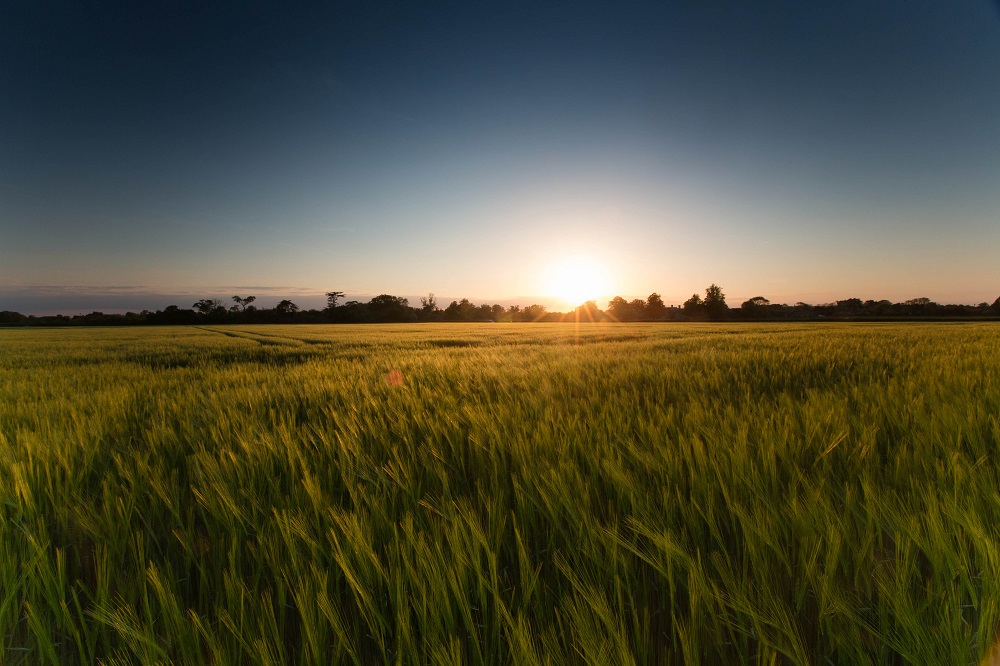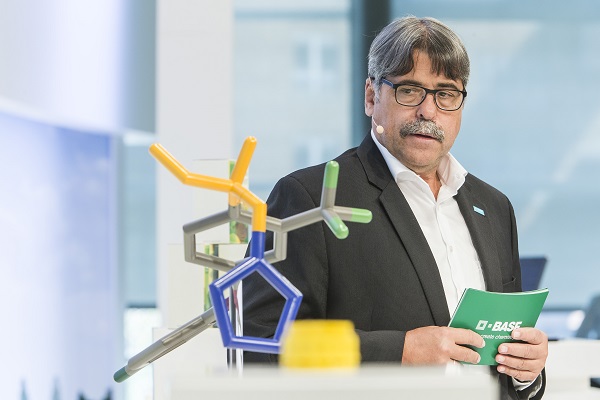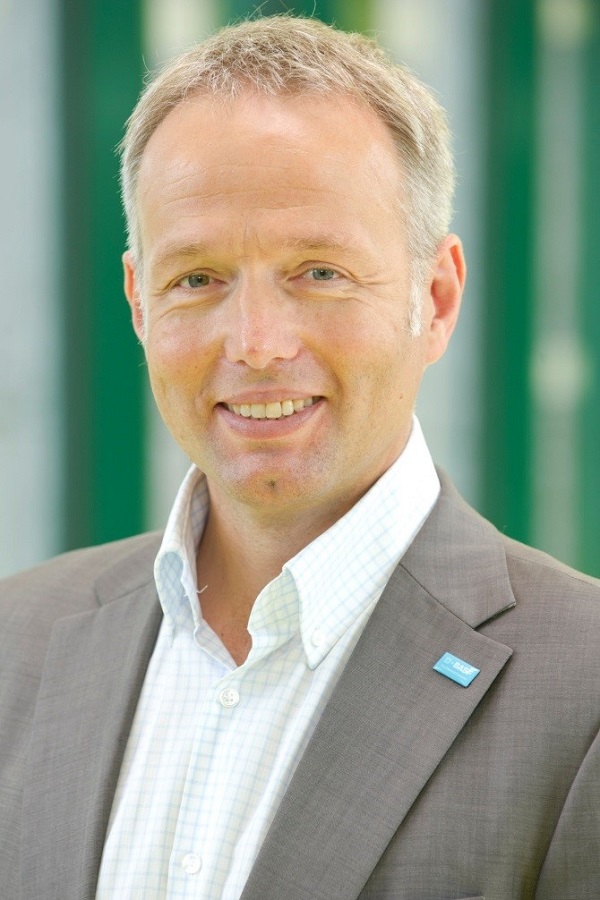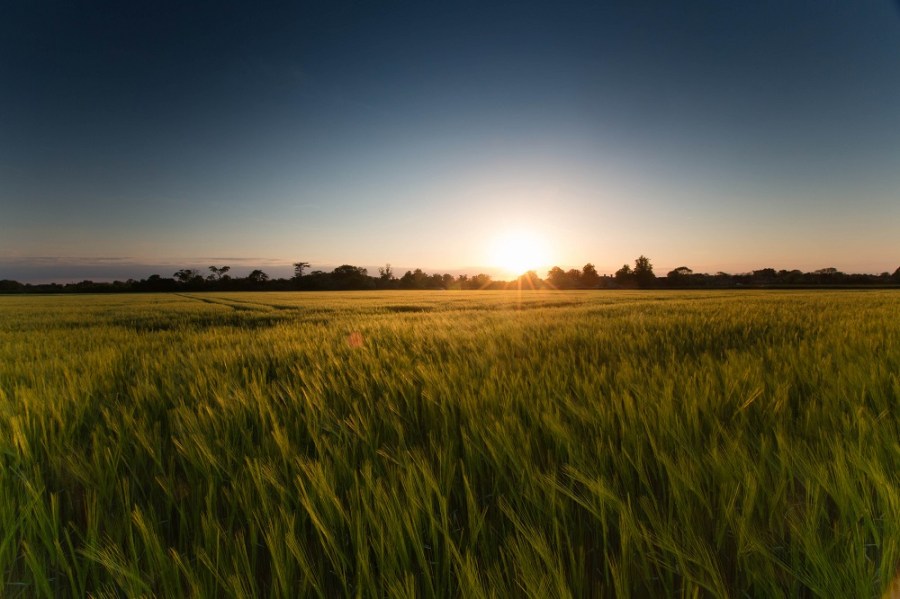
The crop protection industry could be set for seismic change following large takeover deals and mergers. CPM travels to Germany to find out what new developments we can expect from BASF and Bayer.
It’s the most exciting pipeline I’ve ever seen.
By Tom Allen-Stevens and Lucy de la Pasture
Against a backdrop of some of the biggest global corporate takeover deals ever witnessed, Bayer and BASF each invited the world’s press to their German headquarters last month for a glimpse at what will flow from their richly funded product pipelines over the next decade.
Senior management at Bayer remained tight-lipped about its $66 billion acquisition of Monsanto, while the deal’s pored over by the US Securities and Exchange Commission. BASF indicated it’s in the market for what may spin out of the deal, in terms of acquisition opportunities and in-licensing agreements, and the same goes for any fall out from ChemChina’s $44 billion takeover of Syngenta and the $130 billion merger of Dow AgroSciences and Dupont. But Harald Schwager, who sits on the BASF board of directors, refused to be drawn on what these may be, nor did he hint at areas where the company’s keenest to invest.

Markus Heldt said the launch of BASF’s new triazole fungicide Revysol (foreground) will be the biggest ever.
What is on its way from BASF, however, is a brand new herbicide for blackgrass, revealed the president of the company’s crop protection division Markus Heldt. Along with Revysol, its new ‘blockbuster’ triazole fungicide, a number of biological innovations and a host of other new actives, that amounts to a €3 billion crop protection product pipeline set to bring new chemistry to farms over the next eight years, he claimed.
“It’s the most exciting pipeline I’ve ever seen in BASF. Revysol will be our largest launch ever, that we’re expecting in 2018-19. And this innovation comes in spite of a very difficult regulatory environment.”
But it was the “herbicide for blackgrass on its way”, dropped into his presentation, that piqued the interest of the British contingent at the global gathering of almost 100 journalists at the company’s headquarters in Ludwigshafen, near Frankfurt.
“It’s a new mode of action for cereals in the UK – a residual, pre-emergence product. We’re expediting development and regulatory work and will be submitting the dossier for assessment in 2017,” he told CPM afterwards.
It was “too early” to share details on efficacy, he said, nor was there any information on just what this new mode of action does. What’s more, it won’t appear before 2020, and it’s more likely to be 2022 before it’s licking up blackgrass.

Expect to see oilseed rape seed coatings combining chemical fungicide with biological activity as early as 2018, said Philipp Rosendorfer.
But it’s likely to sit at the base of the autumn herbicide stack, and there are hints it’s akin to a new-generation flufenacet. It tackles resistant grassweeds and has a good regulatory profile, assured Markus Heldt. “That gives us confidence.”
So why’s it taken so long to bring on a new product? “Herbicide research was scaled back as a result of GM crops and the dominance of glyphosate,” he explained. “More recently, we’ve significantly increased our investment in this area.”
Bringing a product to market may get even tougher post Brexit, however. He indicated strong concern for how the likes of France, Germany and Sweden will pull the regulatory framework once the UK’s CRD is no longer at the table. “Without the UK, I’d expect the regulatory circuit to be more hostile – that changing landscape is one of our biggest challenges,” he said.
Hopefully that won’t take the wind out of the sails currently gusting Revysol ever closer to market. Due to appear in the UK as early as 2019, it’s the first in a new class of isopropanol azoles, explained BASF’s Rolf Reinecke.
“In response to the tough regulatory environment, we took a fresh approach to R&D that looked not just for high activity on fungal targets, but also at side effects.”
As an azole and a DMI fungicide, it works on the C14-dimethylase enzyme. But it has a unique isopropanol moiety. “The triazole ring sits on the neck of the slim isopropanol. This allows the molecule to form a ‘hook’ that blocks the site of the enzyme a hundred times better than other azoles,” he claimed.
Tests have shown it’s highly effective against all strains of septoria, including those that have developed mutations and are exhibiting resistance to existing azoles. “Prothioconazole and epoxiconazole still have good protectant properties, but they’re not such good eradicants,” noted Bill Clark of NIAB, who’s seen the new fungicide perform in trials.
“Revysol works on septoria populations that are highly resistant because the population hasn’t adapted to it yet. It’s going to be a really good partner for SDHIs, matching them on efficacy.”
Expect to see biologicals creep in with the chemistry over the next few years, said Philipp Rosendorfer, of BASF’s Functional Crop Care division, especially in seed coatings. The company’s opened its new biological crop protection and seed solutions centre at its facility in Limburgerhof.
Here the company’s developing new uses for biological pesticides and microbials. Perhaps of particular interest is the biofungicide Serifel, based on the bacteria Bacillus amyloliquefaciens. “It can be combined with a broad variety of chemical fungicides or insecticides, such as in Xanthion, an in-furrow fungicide that includes pyraclostrobin.”
While a fungicide is target specific and acts on a pathogen, the bacillus is broader spectrum and builds plant defences. “Typically it will settle on a root and help the plant develop,” he said.
Oilseed rape is likely to be the combinable crop that will benefit first from these new products, he added. Combined with pyraclostrobin or fluxapyroxad, 2018-20 is when they’re expected to appear.
Changes ahead in Bayer product pipeline
A slick, inspiring and strangely reassuring keynote address from Bayer president, Liam Condon, opened the company’s ‘Future of Farming Dialog 2016’ in Leverkusen, near Cologne.
His message was that the solutions to the challenges ahead lay in “shaping the future of farming”. He advocated a proactive approach, using multiple technologies to ensure “innovative integrated solutions”, rather than relying on chemical in a can and discovery of the next new molecule.
That’s not to say that R&D doesn’t still lie at the heart of the German giant, as Liam Condon reassured. “The combination of over €1 billion per annum invested in R&D, with additional infrastructure investments, will help ensure a continuous innovative product pipeline that can meet the challenging needs of growers around the world.”
So what does that actually mean to farmers globally? In the short term, new active ingredients don’t feature highly in Bayer’s product pipeline, with two new actives for disease and pest control expected in 2019. But beyond 2020, there are more than 20 targets in the chemical crop protection pipeline, so it’s a case of watch this space.
Perhaps the most exciting growth areas in its R&D are in biologicals and traits, however, reflecting how important Bayer views these technologies in future crop production strategies. They include targeted genome optimisation – gene editing, gene silencing and gene stacking are just some of the ways in which this can be done to find new, non-GMO traits for varieties of the future. Liam Condon described Computational Life Science (CLS) as the glue in the high-tech breeding programme that will hold everything together by managing the R&D data.
Bayer head of seeds, Frank Terhorst, told CPM that their hybrid wheat-breeding programme was well underway, with the first new hybrid varieties scheduled to come to the market in 2023.
“We’ve passed the first milestone – technical proof of concept – so can produce a hybrid wheat with heterosis (hybrid vigour) that has higher yields, which was one of the major challenges. A second breakthrough was to produce seeds at a competitive price which we now believe we can do,” he explained.
The traits programme in wheat is just at the beginning and there’ll be much more to come, with €1.3 billion scheduled to be invested over the next decade. Efforts focus on developing germplasm with higher yielding capabilities, which will go beyond the heterosis achieved in the hybrid programme, added Bayer head of R&D Dr Adrian Percy.
Other products which will be popping out of the pipeline are styled as ‘major life-cycle innovations’. With more than 100 life-cycle management projects underway, this is another area where significant advances may be made.
One notable development is Bayer’s recognition that collaboration between organisations is a key part to developing sustainable agricultural solutions. It’s put €200M into digital farming technologies to develop a digital support system for farmers, free for them to use, to “enhance crop protection strategies across the world”.
With an aim of a ‘clean field’ as the result of this approach, it’s an ambitious project but achievable in 3-5 years, according to Tobias Menne, Bayer head of digital farming.
Liam Condon also touched on this theme in his address. “The challenges for agriculture are too large for any one company, institution or even country to solve. We need to collaborate with the best available partners externally to ensure we can find even more innovative and more sustainable solutions to the challenges we face in agriculture,” he said.




